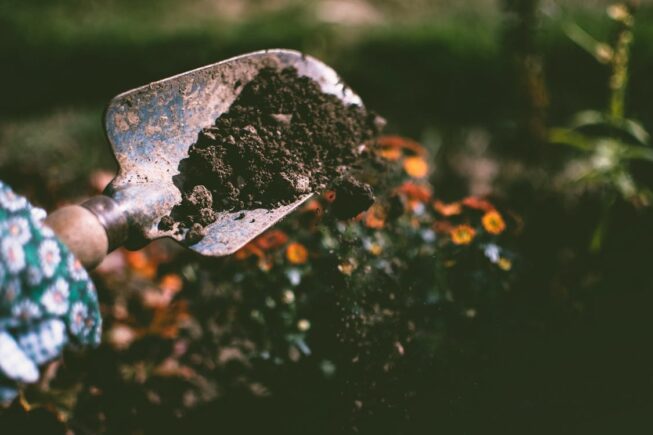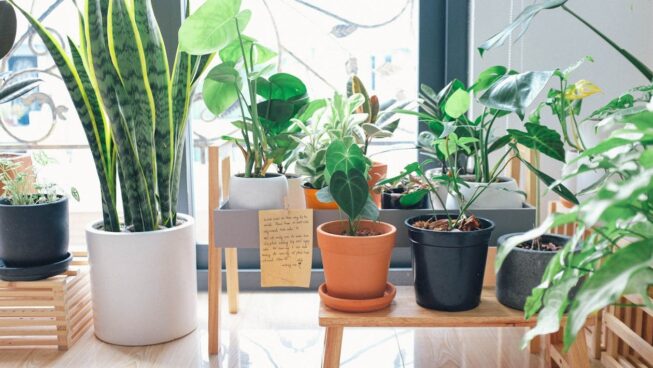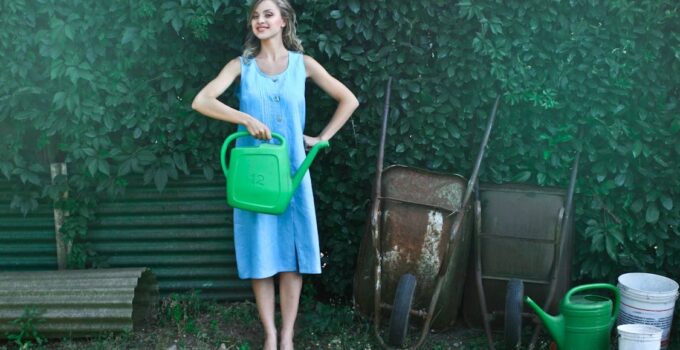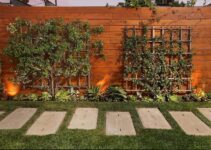There’s no getting around it; the winter is brutal to gardens. Unless you are particularly dedicated gardener, the colder seasons are likely a time when you lock the shed and hang up your gardening gloves, resolute that you will rebuild your planting themes as soon as the weather gets warmer. But as the sunshine appears from behind the clouds, it can be difficult to know where to start.
The whole concept of a “spring clean” involves clearing what has gone before and bringing in something new. In this article, we will outline some our top 5 ideas to reinvigorate your garden space during the warmer seasons. Let’s take a look…
Table of Contents
1. Waste Not, Want Not
Once you start your springtime gardening, it is likely that your lawn space will be covered in fallen twigs and mulched leaves, casualties of the fierce winter winds. However, this garden waste can be repurposed, creating a beneficial by-product as you clear your space.
Once you have collected this natural waste, you can turn it into fertiliser by storing it into compost bins. Home-made fertiliser is a fantastic tool to have at your disposal, as it helps to create nutrient rich soil for further planting.
There are many different options for compost bins, including metal and recycled plastic, or you can simply build your own out of scrap timber. Metal and plastic especially is a great choice for compost, as the material will not rot due to the effects of moisture.
Top tip: no matter what kind of material you choose for your compost bins, place them on top of stones or gravel, as this will prevent burrowing pests, such as rats, from entering the bin. Other kinds of garden and food waste can be added to the pile, such as grass cuttings, eggshells, and cardboard.
2. Repot, Replant, Reassess

Source: pexels.com
The winter can leave your garden looking barren and lifeless, but it also allows you to reassess your garden design once the leaves have fully fallen away. Pinpoint where the gaps are in your planting theme and start to fill them.
You can begin to plant perennial flowers, such as lavender, hellebores, and geraniums so that when springtime begins, you can go outside into your garden and be met with a vibrant pop of colour.
Beyond simple decorative flourishes, the warmer weather also presents a prime opportunity to plant more vegetables. Growing your own produce is an incredibly rewarding experience, and successfully maintaining a vegetable plot can change your garden into a rich outdoor larder.
The spring is the perfect time to start growing superfoods like kale and spinach, as well as lettuce, broccoli, peas, onions, and carrots, just to name a few.
3. Outdoor Seating Spaces
The summertime is normally when homeowners start to consider creating an outdoor seating area, to make more use out of the sunshine. Why not get ahead of the curve and start planning now, so it’s fully completed ahead of schedule? It will mean that you will already have a perfect seating space during those short heat waves.
We recommend using either patio paving or composite decking as the base of your seating spaces, as these will require the least amount of maintenance when they are installed, needing only an occasional hose down should dirt begin to accumulate.
Once your outdoor seating base is established, you can begin to decorate it. Ceramic pots and planters can help to gently ease the harsher edges of your decking or patio spaces and can serve as a vibrant pop of characteristic colour.
Long-life outdoor furniture can be used to populate the area, along with waterproof furnishings, such as rugs, throws, and cushions. Metal or recycled plastic are recommended for outdoor furniture, as they are the most durable, low maintenance options, when compared to alternatives such as traditional timber or natural rattan.
4. Garden Rooms and Greenhouses

Source: pexels.com
Despite the clearer skies and the abundance of sunshine, it can still be awfully cold in the earlier springtime months. This is where introducing an outdoor room can be extremely beneficial, as it creates a warmer environment for you to get stuck into your planting.
Greenhouses offer an additional protective layer against those late, fierce cold Atlantic winds and rain clouds that could disrupt your initial attempts at springtime planting. Alternatively, a garden shed with Perspex signage or acrylic windows can still allow sunlight to stimulate the growth of less hardy plants.
Garden sheds also double up as great storage for tools, or as a safe shelter for your outdoor furniture when it is not in use. Not keen on having your garden look fusty or old fashioned? No worries: a garden shed can be easily transformed into a more modern garden addition with some simple embellishments.
For example, you can either paint the surface of the timber with dark black or grey paint, as it will create a timeless, stylish look, or use coloured composite cladding to adorn the exterior shell to make it appear more like an outhouse.
5. Decorative Features
Want to create an interesting focal point for your garden space without breaking the bank? There are many natural additions you can include into your space that can create something truly interesting.
For example, to concept of a stumpery is coming back into fashion, which simply means creating a decorative space using tree stumps, logs, and/or driftwood. These are popular in many stately homes and can provide the base and vital nutrients for new plant growth.
Alternatively, you may be able to find other, unused objects in your garden, and give them a new life. For example, if you use timber furniture for your patio or decking space, you can repaint them to try and match or contrast with your planting theme. Painting your furniture white can help to make the other colours in your space stand out, drawing more attention to them.
If you are choosing more long-life alternatives for your outdoor furniture, such as recycled plastic or metal, the opposite it also true, i.e. choosing darker coloured furniture to contrast against lighter-toned planting themes, decking, or fencing.
Conclusion
To conclude, there are countless things you can do to create an exciting garden space during the springtime. Making compost and reassessing your garden design after the winter helps you to lay down the foundations for a successful garden project for the rest of the year.
Similarly, creating a comfortable outdoor seating space with decking, patio slabs and outdoor furnishings is a fantastic way to make more use out of your outdoor environment. Finally, building an outdoor room and installing decorative features can transform your garden into something awe-inspiring.






